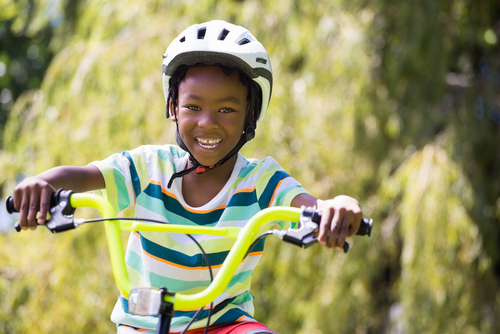- Empty cart.
- Continue Shopping
The Importance of Bicycle Safety for Kids

Bicycling is a popular and enjoyable activity for children, offering numerous benefits, including exercise, outdoor exploration, and independence. However, it’s essential to prioritize bicycle safety to ensure that kids can enjoy this activity while minimizing the risks associated with it.
1. Head Injury Prevention
One of the most critical aspects of bicycle safety is the prevention of head injuries. Wearing a properly fitted helmet is the single most effective way to protect against head injuries. It’s estimated that wearing a helmet can reduce the risk of head injury by up to 85%. Teach your child the importance of always wearing a helmet while riding a bike.
2. Visibility
Enhancing visibility is crucial for the safety of young cyclists. Ensure that your child’s bike has reflectors and consider adding additional reflective materials to their clothing and bike. Encourage them to wear bright-colored clothing to increase their visibility to drivers, especially in low-light conditions.
3. Traffic Rules and Signals
Teach your child the basic traffic rules and signals for cyclists. They should know when and how to stop, yield, signal turns, and obey traffic signs and signals. Make sure they understand the importance of following these rules for their safety and the safety of others on the road.
4. Ride in Safe Locations
Encourage your child to ride in safe locations. Sidewalks, bike paths, and quiet residential streets are often better options than busy roads. Ensure they understand where it’s safe to ride and where they should avoid.
5. Proper Bike Fit
Ensure that your child’s bicycle is the right size and fit for their age and size. An improperly sized bike can be challenging to control and increase the risk of accidents. As your child grows, regularly check their bike to see if it needs adjustments or replacement.
6. Regular Maintenance
Teach your child basic bike maintenance, such as checking tire pressure, brakes, and ensuring that all parts are in good working order. Regular maintenance can prevent accidents caused by mechanical failures.
7. Riding With Adult Supervision
For younger children or those just learning to ride, adult supervision is crucial. An adult can provide guidance, set a good example for safe riding, and intervene in case of emergencies.
8. Signals and Communication
Teach your child to use hand signals to indicate turns and stops. Make sure they understand the importance of clear communication with other road users, including drivers and pedestrians.
9. Avoid Distractions
Emphasize the importance of staying focused while riding. Distracted riding, such as texting or using headphones, can lead to accidents. Encourage your child to keep their full attention on the road.
10. Respect Traffic Laws
Instill in your child the importance of respecting all traffic laws, even when riding a bike. This includes stopping at stop signs and red lights, yielding to pedestrians, and obeying speed limits.
11. Protective Gear
In addition to helmets, consider other protective gear like knee and elbow pads, especially for children who are just learning to ride or are more accident-prone.
12. Teach Defensive Riding
Teach your child to be a defensive rider. This means being aware of their surroundings, anticipating potential hazards, and taking precautions to avoid accidents.
13. Education and Training
Consider enrolling your child in a bicycle safety course or program. These programs teach essential safety skills and can help instill responsible riding habits from an early age.
14. Lead by Example
Set a good example for your child by following all bicycle safety rules and practices yourself. When children see adults prioritizing safety, they are more likely to do the same.
15. Regular Check-Ins
Have regular conversations with your child about bike safety. Ask about their rides, any challenges they faced, and any close calls. Encourage them to be open about their experiences and concerns.
Finally, Bicycling offers numerous benefits for children, but it also comes with certain risks. Prioritizing bicycle safety is essential to ensure that kids can enjoy the activity while minimizing the potential for accidents and injuries. By teaching your child the importance of helmet use, following traffic rules, riding in safe locations, and practicing defensive riding, you can help them develop safe and responsible cycling habits that will serve them well throughout their lives.








